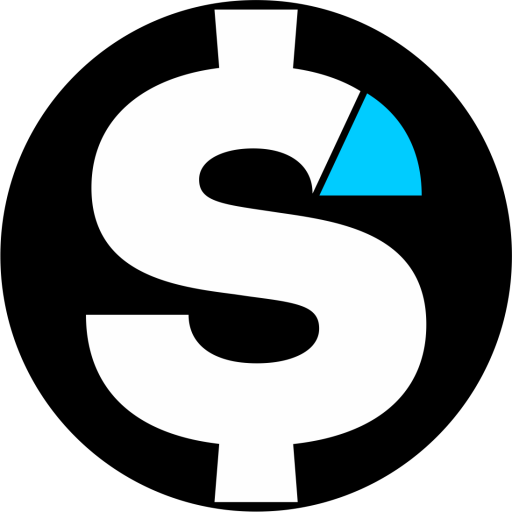10 Easy Digital Products You Can Start Selling Right Now
 Image: Domenico Loia // Unsplash
Image: Domenico Loia // Unsplash
Digital products are the quickest, most scalable way to build income online. Unlike physical goods, they require no inventory, no shipping, and minimal upfront costs. You create once and sell repeatedly. That’s why they are perfect for anyone looking to start a side hustle or even launch a full business without heavy investment.
If you want to earn real money on your schedule, selling digital products is one of the smartest moves you can make today. This article explores 10 digital product ideas you can start selling immediately, even if you’re brand new. I’ll show you how each product works, why it sells, and practical tips for getting started fast.
What Makes Digital Products So Powerful?
Digital products unlock unique advantages over traditional selling. They fit perfectly in the modern economy, where people want instant access and convenience. Here’s what makes them stand out:
- Low overhead: No physical materials, storage, or shipping.
- High scalability: Once created, products can be sold unlimited times.
- Global reach: Sell anywhere, anytime, without borders.
- Flexible marketing: Use websites, social media, or marketplaces.
- Passive potential: Automate sales and let your product earn while you sleep.
The barrier to entry is low, but success depends on choosing the right product and putting in smart work. Focus on quality, clarity, and knowing your audience.
1. Ebooks: Share Your Expertise in Written Form
Ebooks remain a cornerstone in the world of digital products because they’re straightforward to create and deliver immense value. Unlike a blog post or article, an ebook offers a deep dive into a subject that your audience cares about. You’re packaging your knowledge into a focused, easy-to-consume format that readers can refer back to anytime.
The creation process requires you to choose a specific problem or topic that resonates strongly with your niche. For example, if you’re passionate about fitness, your ebook might be “The 30-Day Home Workout Plan for Busy Professionals.” The key is clarity. Your readers want actionable advice, not vague theories. Structure your ebook in a way that guides readers step-by-step. Use headings, images, and callouts to break down information and keep the pace lively.
Beyond writing, invest effort into the design. A professional cover and well-formatted text add perceived value and help your ebook stand out in crowded marketplaces like Amazon Kindle or your website. Pricing should reflect the depth and uniqueness of your content; don’t undervalue your expertise.
Marketing your ebook effectively also matters. Use email newsletters, social media teasers, or guest blog posts to attract your ideal readers. The beauty of ebooks is that they create a foundation for future upsells—courses, coaching, or exclusive content that deepen the learning experience.
2. Online Courses: Teach Skills and Transform Lives
Online courses have changed how people learn and earn. If you can teach any skill, an online course lets you scale that teaching far beyond one-on-one sessions. Courses appeal because they provide structured, guided learning—something ebooks and videos alone can’t always deliver.
When building your course, start with a clear outcome. What transformation do you promise? Maybe it’s “Master Photoshop Basics in 30 Days” or “Launch Your First Website Without Coding.” This focus helps you create content that moves students through logical stages, avoiding overwhelm.
Break the course into digestible modules with short videos, written guides, and practical exercises. People learn better when they can practice and apply concepts immediately. Including quizzes or community discussion groups also encourages accountability and interaction, making completion more likely.
Pricing courses can vary dramatically. For beginners, low-ticket offers ($50-$100) can attract a broad audience. For advanced skills or coaching, premium pricing ($200-$1,000+) works well if the value justifies it. Keep in mind that course creation takes upfront effort, but once launched, courses can bring passive income while you focus on new projects.
Promotion is crucial. Leverage partnerships, webinars, or free mini-courses to build trust before pitching the full version. This method reduces resistance and builds a loyal following.
3. Printables: Simple, Quick, and High-Demand
Printables are a favorite digital product for creative entrepreneurs because they’re simple to make but highly versatile. These downloadable files, such as planners, checklists, budget trackers, or wall art, appeal to people wanting quick solutions that improve their daily lives.
Unlike courses or ebooks, printables require basic graphic design skills rather than advanced writing or teaching. Tools like Canva make it easy for anyone to create eye-catching designs, even without formal training.
Success in selling printables comes from understanding what your target market wants and creating attractive, usable designs. For example, a busy mom might want a colorful weekly meal planner with grocery lists, while a small business owner might need social media content calendars.
The best printables solve specific problems and encourage repeat customers. Offering themed bundles (e.g., holiday planners or fitness journals) adds perceived value and encourages buyers to return.
Selling printables on Etsy is a popular option because the marketplace has built-in traffic looking for exactly these products. But don’t overlook promoting them via your website and social channels for higher margins.
4. Stock Photos and Graphics: Sell Visual Content
Visual content is the backbone of online marketing, blogging, and branding. If you’re skilled with a camera or graphic design software, creating stock photos and graphics can turn into a steady income stream.
The key to success is niche focus and quality. Instead of generic landscapes, shoot or design images that businesses frequently use: professionals working, happy families, tech setups, or health and wellness themes. Unique, authentic images get more downloads than overly staged or cliché stock photos.
Many creators upload their work to platforms like Shutterstock, Adobe Stock, or iStock, which handle licensing and distribution but take a commission. Alternatively, selling directly on your website or marketplaces like Etsy for graphic templates gives you more control and bigger profits.
Tagging your images with relevant keywords is essential so buyers find your work. Don’t underestimate the importance of consistent quality and quantity — the more you upload, the more passive income potential you build over time.
5. Music and Audio Files: Tap Into the Sound Market
Audio content isn’t just for musicians anymore. Creators need music and sound effects for videos, podcasts, apps, and games. If you create beats, ambient sounds, or voiceovers, you have a product that many people want and can’t easily make themselves.
Quality is non-negotiable in this space. Tracks must be clean, professionally mixed, and well-labeled for different moods or uses. For example, a relaxing meditation track or an upbeat background tune for YouTube videos.
Marketplaces like AudioJungle or Pond5 simplify selling by handling licensing and payment. Offering bundles or exclusive licenses can command higher prices. You can also build your site to sell directly to customers who want tailored sounds.
Remember, audio products often serve other creators, so building a reputation for reliability and variety will help you stand out.
6. Software and Apps: Solve Problems with Code
If coding is your strength, software and apps are highly profitable digital products. Unlike one-off sales, software often runs on subscription models, delivering ongoing income.
To succeed, focus on real-world problems. For example, a small business owner might need an invoicing plugin for their website, or a freelancer might want a time-tracking app. Identify pain points and build simple solutions rather than complex, hard-to-maintain programs.
Your product’s user experience matters—intuitive design, quick load times, and reliable performance keep users coming back. Offer free trials or demo versions to build trust and ease onboarding. Distribution can happen through app stores, your website, or marketplaces like Envato. Keep your software updated with customer feedback to stay relevant.
7. Membership Sites: Build Community and Recurring Income
Membership sites create steady revenue by combining exclusive content with a sense of belonging. Whether you’re a fitness coach, artist, or business mentor, a membership lets you provide ongoing value and build relationships. Members pay regularly to access resources like videos, guides, live Q&A sessions, or forums. The key to success is consistent content delivery and active engagement. Without interaction, members lose interest and cancel.
Platforms like Patreon or MemberPress offer easy ways to set up membership tiers and manage payments. Offer perks at each level, such as personalized feedback, early access, or exclusive downloads. Memberships work best when you have expertise and the ability to connect deeply with your audience over time. It’s about more than products — it’s about community.
8. Templates and Themes: Save Time for Others
Templates help buyers skip tedious design work. They come in many forms: resume templates, social media posts, PowerPoint decks, or website themes. Busy professionals, freelancers, and small business owners pay for polished templates that make their lives easier.
Creating templates requires design skills, but you don’t have to reinvent the wheel. Focus on usability and aesthetic appeal. Easy customization options increase value, such as editable colors, fonts, or layouts.
Selling on marketplaces like Creative Market puts your templates in front of a creative audience, but your website can offer premium bundles or custom services. Keep your templates updated to align with current trends and software updates, and listen to customer feedback to improve usability.
9. Digital Planners and Journals: Organize Digitally
Digital planners are an evolution of paper planners that leverage tablets, styluses, and apps like GoodNotes. They appeal to tech-savvy buyers who want convenience, flexibility, and style. Creating a digital planner involves graphic design to produce pages like calendars, to-do lists, or habit trackers. The difference is interactivity—hyperlinks between pages, editable fields, and customizable layouts.
Because the digital planner market is growing fast, finding your niche is critical. Are you targeting students, entrepreneurs, or wellness enthusiasts? Tailor features accordingly. Selling on Etsy or your store works well. Bundling digital stickers, widgets, or add-ons can increase average order value.
10. Consulting and Coaching Packages: Package Your Knowledge
Consulting and coaching traditionally happen live, but packaging your expertise into digital products scales your reach. You can create guides, workbooks, video series, or email courses that clients buy and use independently or alongside live sessions. This model lets you reach more people without trading hours directly for money. Create tiered packages for different budgets, and offer personalized support as upsells.
Successful consultants combine clarity, empathy, and authority. Your digital products should reflect these qualities by being clear, actionable, and well-structured. Marketing consulting products involves building trust via content marketing, testimonials, and case studies.
How to Pick the Right Digital Product for You
Not every digital product fits your skills or audience. Choose what aligns with your passion and expertise. Start small, test ideas, and refine based on feedback. Building a digital product business is about consistent improvement and serving your market.
Remember, quality wins. Digital buyers expect polished, clear, and valuable products. Invest time in presentation and customer support.
Where to Sell Your Digital Products
The platform matters. Marketplaces like Etsy, Udemy, or Creative Market have built-in traffic but take fees. Selling on your website means more control and profits, but requires marketing effort. Start with a mix: use marketplaces to validate ideas and direct buyers to your site. Build an email list to nurture repeat customers.
Final Thought: Start Now, Refine as You Go
Waiting for perfect conditions wastes time. The digital economy rewards action. Pick one idea, create a simple version, and launch. Learn from real buyers and evolve. Digital products are powerful because they let you share your knowledge and creativity while building income that scales beyond your hours. The best moment to start is now.














